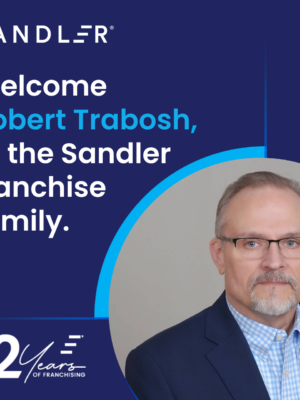The Sandler Coaching Contract

Without trust, effective sales coaching is impossible, and without a good coaching contract, trust between salesperson and coach is virtually impossible.
That’s why it is so important to establish an agreement or verbal contract for the coaching process, much like the up-front contract that salespeople learn to establish during sales calls in order to set expectations and ensure a mutually beneficial outcome. Like that contract, the coaching contract covers the rules of engagement and creates a roadmap to follow during the discussion.
There are six critical elements used in the Sandler coaching contract to eliminate mutual mystification during the session:
-
- Goals for the Coaching Session
- Time Commitment for the Session
- Agenda Detailing the Exact Topic to be Covered
- Coaching Methodology to be Utilized
- Environment to be Created
- Follow-up Actions to Stay on Track
1. GOALS
Whoever initiates the session is in charge of establishing the goal or goals.
Goals must be crystal clear.
Some typical goals for the coaching session are analyzing specific problems, correcting behavioral issues, and understanding internal problems that the salesperson might be facing.
2. TIME
The initial time spent in the session as well as follow-up time commitments must be set and honored. If the coaching sessions are ongoing, each session must have its own specific coaching contract reset, outlining the time commitment.
A one-hour coaching session has three components: 10 minutes to establish the agenda and review past action steps, 40 minutes to delve into the new agenda item, and 10 minutes to anchor learning and establish new action steps.
In the case of a coaching session taking place via videoconference, it’s best to break the content covered in that hour-long session into two thirty-minute sessions.
SESSION ONE would use 10 minutes to establish the agenda and review past action steps, 15 minutes to delve into the new agenda item, and 5 minutes to anchor learning, establish new action steps, and set the next meeting.
SESSION TWO, which would ideally take place within the next 24 hours, would use 5 to 10 minutes to review/reset the agenda, 15 minutes to continue the discussion about the agenda item, and 5 to 10 minutes to anchor learning and establish new action steps.
3. AGENDA
There must be a clear, realistic agenda for the coaching session assessing the problem from the salesperson’s as well as the coach’s perspective.
Once the agenda is established, the time commitment must be analyzed carefully by both sides to ensure there is enough time set aside to deal with the issue.
4. METHODOLOGY
The coach must outline the coaching methodology being used and specifically the steps that are the focus of that day’s session.
The coach must make sure that the salesperson is comfortable, not just with the methodologies that will be used, but with the whole agenda. If there is a disconnect on either, the coaching session will be a waste of time for both people.
5. ENVIRONMENT
The coaching environment must be open and honest so that both parties can communicate openly, and both sides must be comfortable with it. The physical and mental environment must be comfortable so that it supports candid conversation.
The physical environment for in-person sessions should be private and free of interruptions and should take place in a neutral physical environment. It is best to be facing each other without anything between the parties (such as a desk) in coaching sessions that take place in person.
In remote coaching session conducted via videoconference, it’s important that the coach lead the meeting from a professional-looking setting or use an appropriate digital background, and that visual and auditory distractions be held to an absolute minimum. Most important of all is the emotional environment, which must be free of doubt, fear, and uncertainty.
The coach and salesperson should also probably each perform a brief mental check in at the top of the meeting to make sure there are no unspoken issues, hidden agendas, or biases inhibiting success.
The coaching environment must be a safe space where both parties feel they can be completely open with one another.
6. ACTIONS
These can be as simple as the exploration of a new way that the salesperson will behave or think or as complex as a program of behavior modification taking multiple sessions to achieve. But both sides must understand that the session must ultimately be focused on doing, not on talking or excuse making.
Those are the six elements on which the coach and the salesperson will want to secure full agreement before the coaching session begins.








